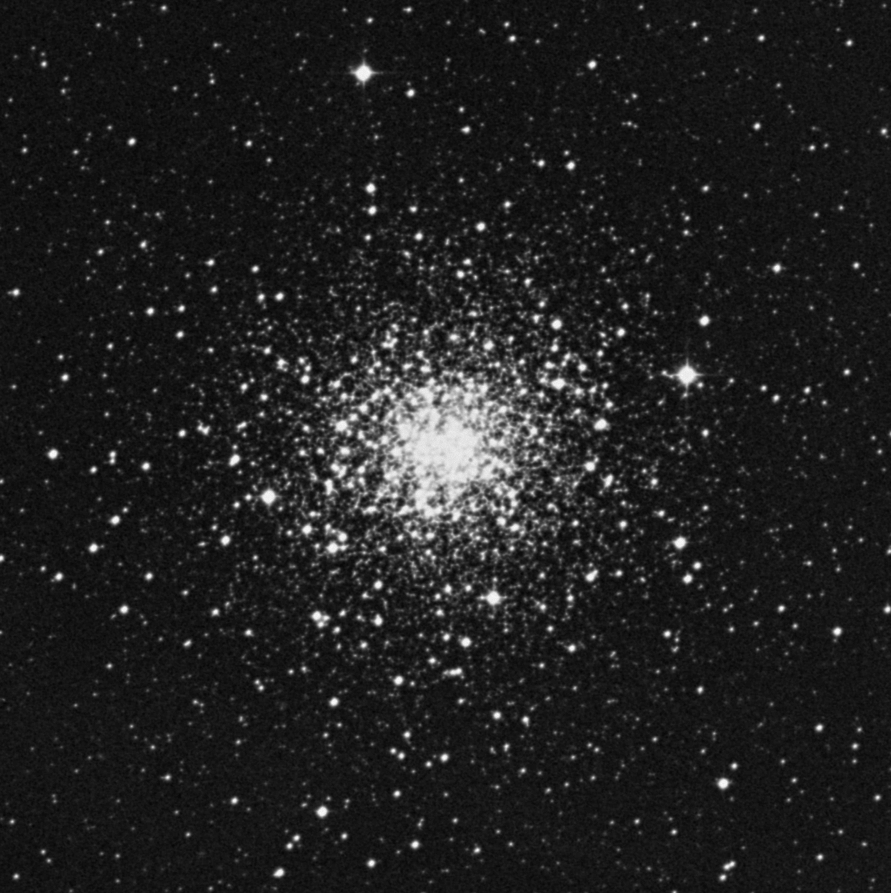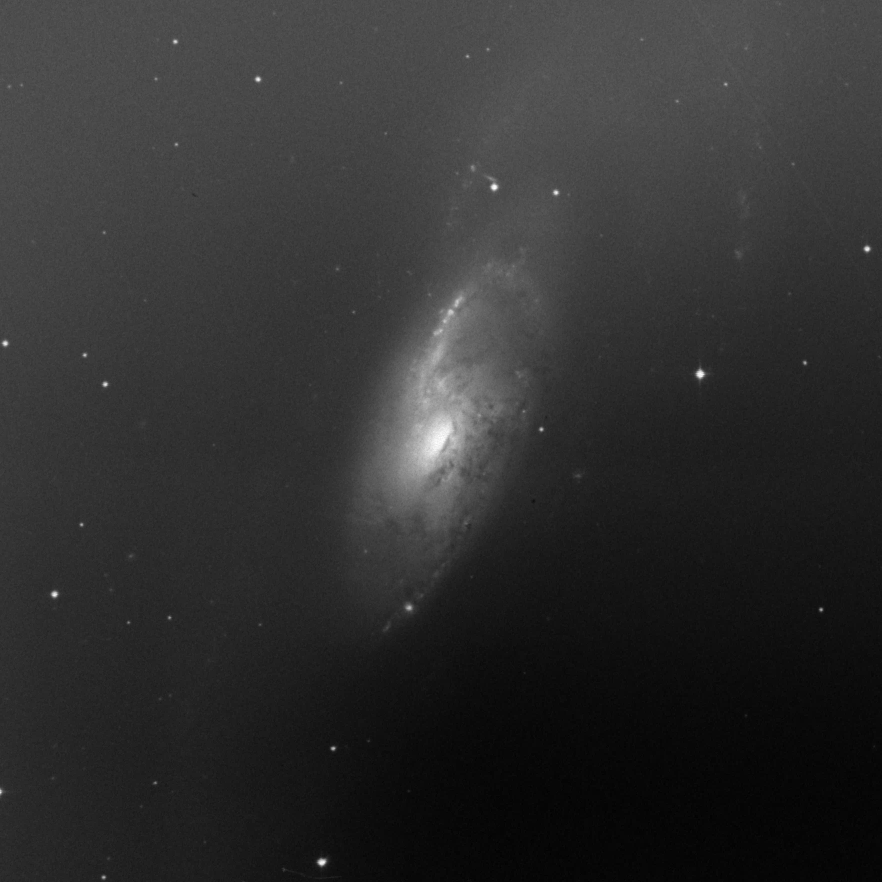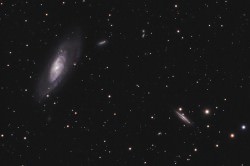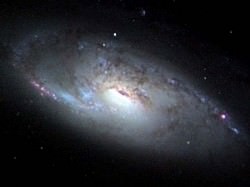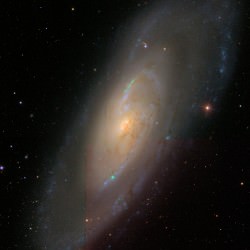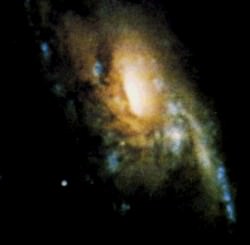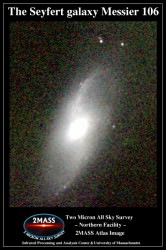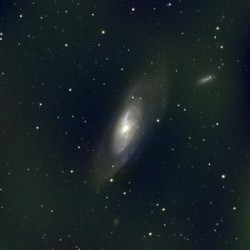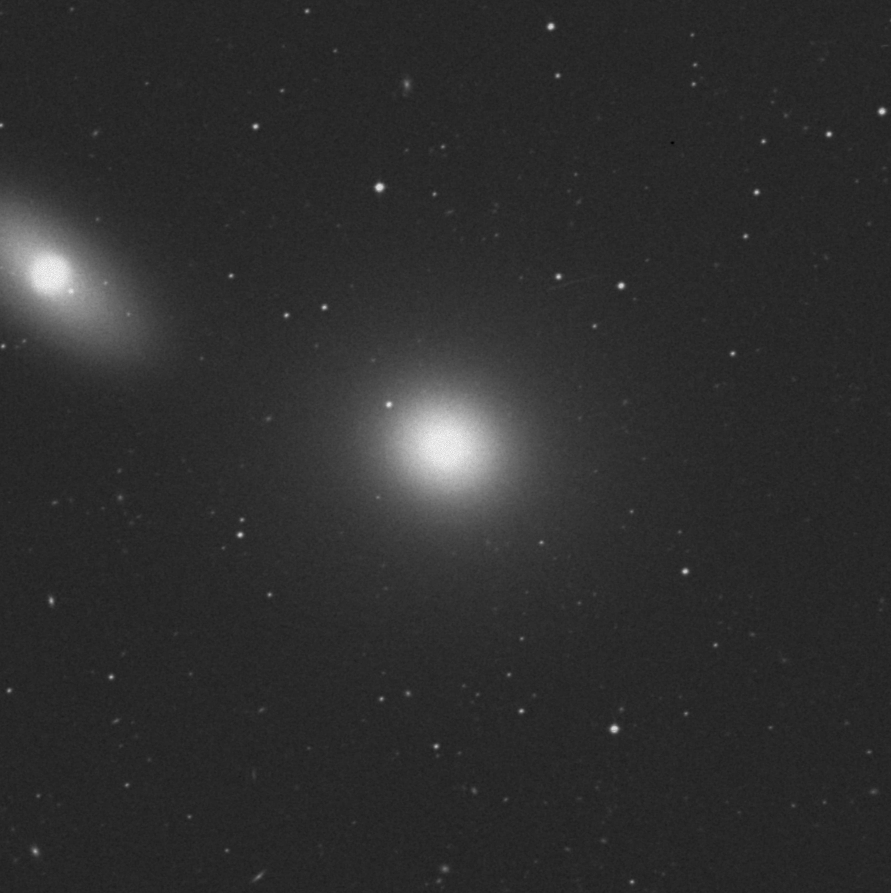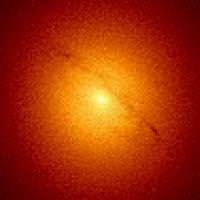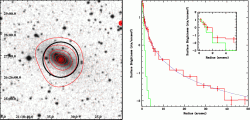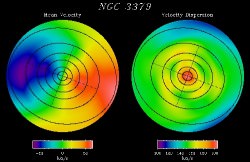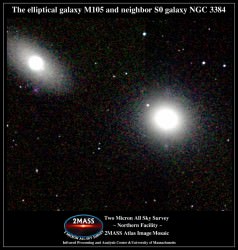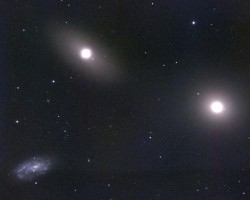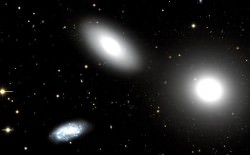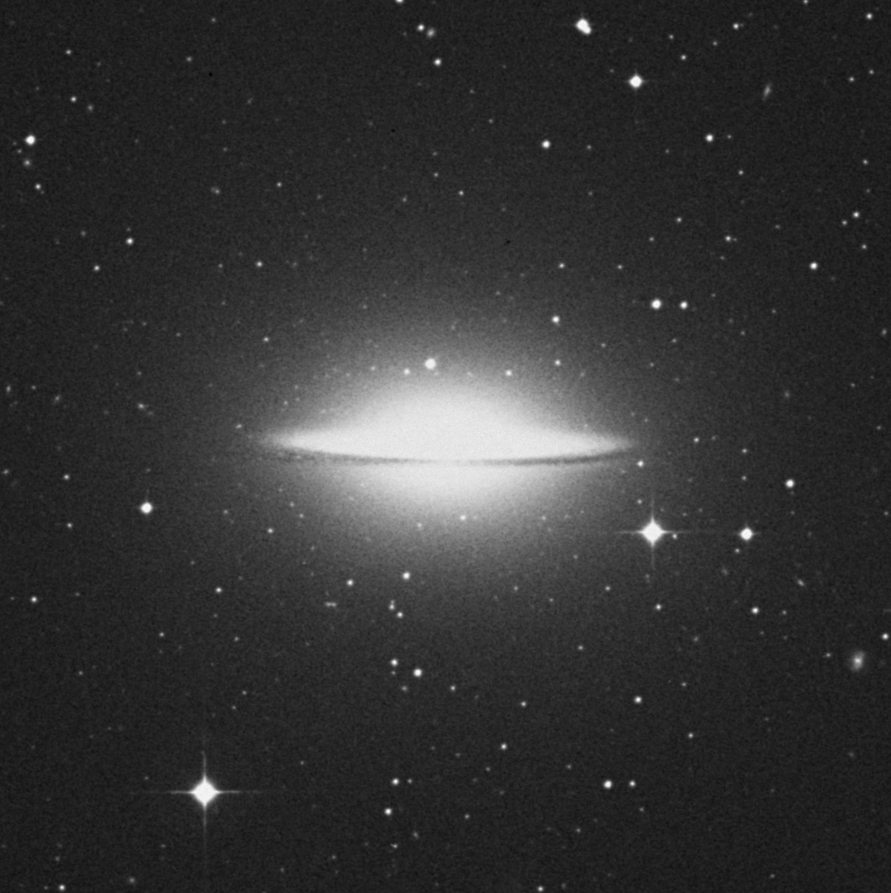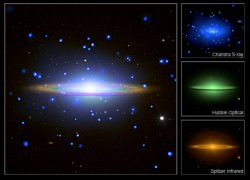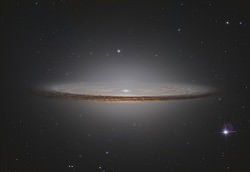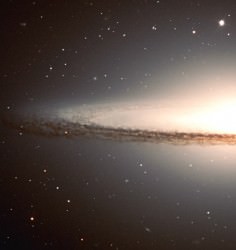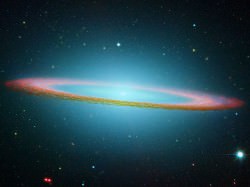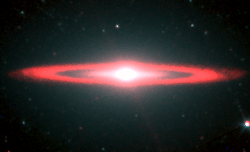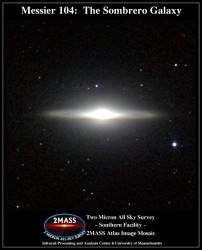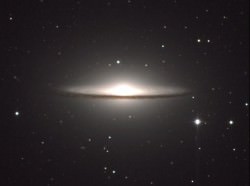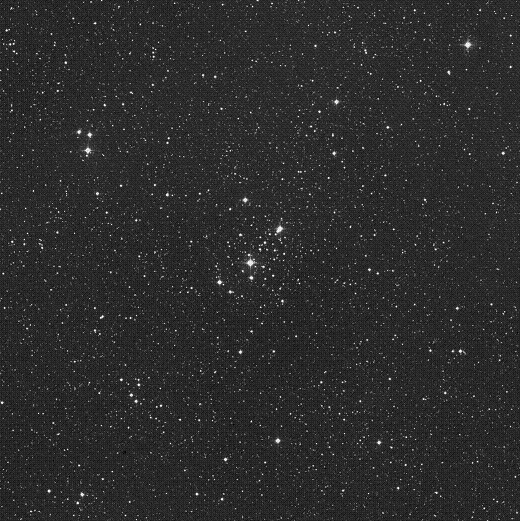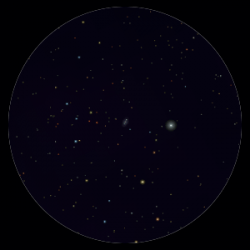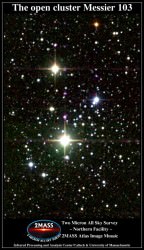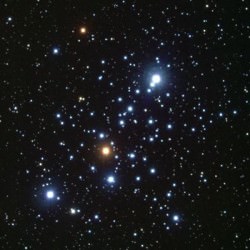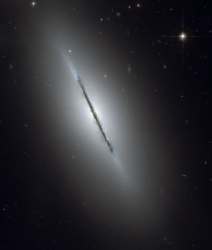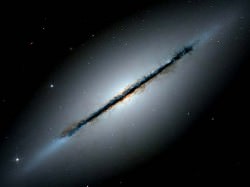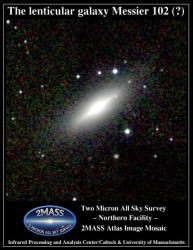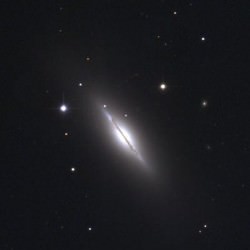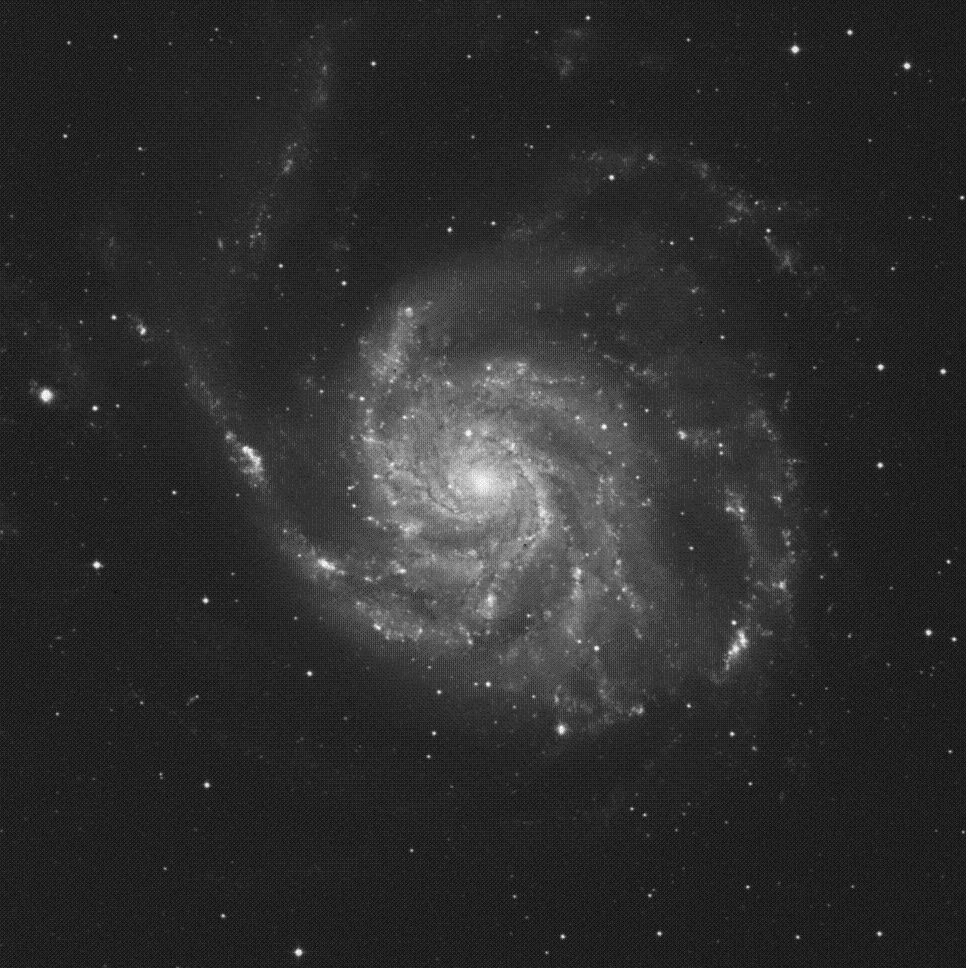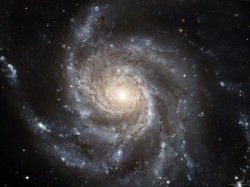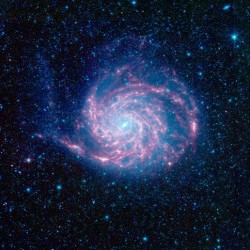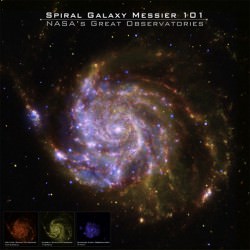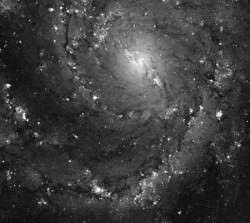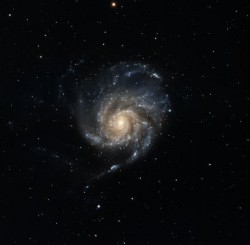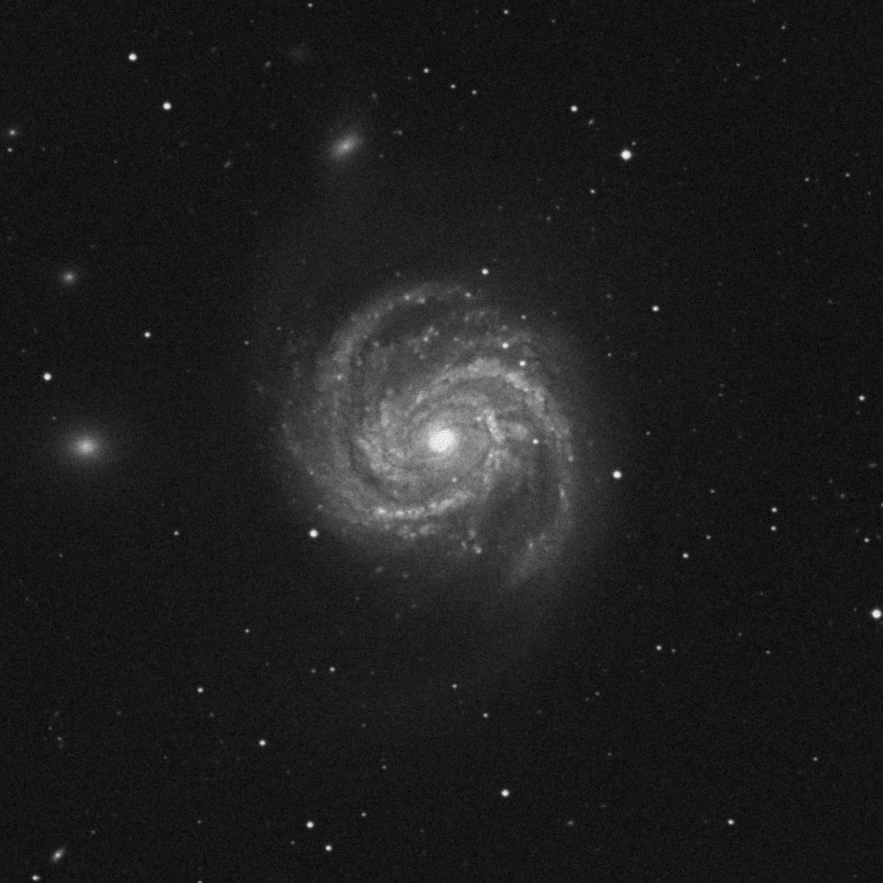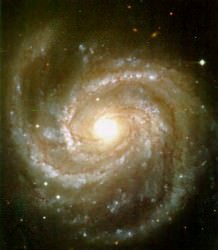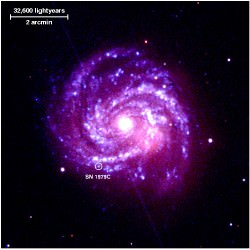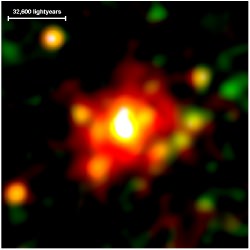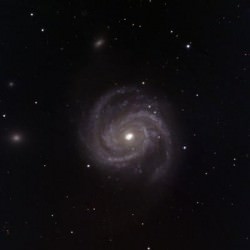Object Name: Messier 107
Alternative Designations: M107, NGC 6171
Object Type: Class X Globular Cluster
Constellation: Ophicuhus
Right Ascension: 16 : 32.5 (h:m)
Declination: -13 : 03 (deg:m)
Distance: 20.9 (kly)
Visual Brightness: 7.9 (mag)
Apparent Dimension: 13.0 (arc min)
Locating Messier 107: M107 is easily found about 4 degrees (3 fingerwidths) south/southwest of Zeta Ophiuchi. In binoculars it is a small, round contrast change and it can even be spotted in larger finderscopes from a dark sky location. At near magnitude 8, Messier 107 can take some moderate light pollution and is well suited for urban and suburban viewing. In a 4.5″ telescope, this globular cluster will take on a grainy appearance and will resolve more and more as aperture is applied.
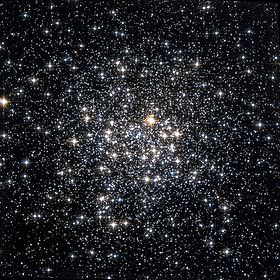 What You Are Looking At: Enjoying its “space” some 21,000 light years away from Earth, this darkly obscured globular cluster spans 80 light years and is coming towards us at a speed of 147 kilometers per second. While that may sound fast, in astronomical terms it’s a rather weak acceleration. “As part of an ongoing program to test Newton’s law of gravity in the low acceleration regime using globular clusters, we present here new results obtained for NGC 6171. Combining VLT spectra for 107 stars with data from the literature, we were able to trace the velocity dispersion profile up to 16 pc from the cluster center, probing accelerations of gravity down to 3.5e-9 cm/s/s. The velocity dispersion is found to remain constant at large radii rather than follow the Keplerian falloff.” says Riccardo Scarpa (et al). “We have now studied three clusters and all three have been found to have a flat dispersion profile beyond the radius where their internal acceleration of gravity is ~ 1e-8 cm/s/s. Whether this indicates a failure of Newtonian dynamics or some more conventional dynamical effect (e.g., tidal heating) is still unclear. However, the similarities emerging between globular clusters and elliptical galaxies seem to favor the first of the two possibilities.”
What You Are Looking At: Enjoying its “space” some 21,000 light years away from Earth, this darkly obscured globular cluster spans 80 light years and is coming towards us at a speed of 147 kilometers per second. While that may sound fast, in astronomical terms it’s a rather weak acceleration. “As part of an ongoing program to test Newton’s law of gravity in the low acceleration regime using globular clusters, we present here new results obtained for NGC 6171. Combining VLT spectra for 107 stars with data from the literature, we were able to trace the velocity dispersion profile up to 16 pc from the cluster center, probing accelerations of gravity down to 3.5e-9 cm/s/s. The velocity dispersion is found to remain constant at large radii rather than follow the Keplerian falloff.” says Riccardo Scarpa (et al). “We have now studied three clusters and all three have been found to have a flat dispersion profile beyond the radius where their internal acceleration of gravity is ~ 1e-8 cm/s/s. Whether this indicates a failure of Newtonian dynamics or some more conventional dynamical effect (e.g., tidal heating) is still unclear. However, the similarities emerging between globular clusters and elliptical galaxies seem to favor the first of the two possibilities.”
 What’s causing M107 to slow down? At home in the halo of our own galaxy, this globular cluster could be caught in our own tidal drag from the MIilky Way’s central bar. Says Christine Allen: “We study the effect of a bar in the galactic orbits of forty-five globular clusters whose absolute proper motions are known. The orbital characteristics of the orbits are compared with those obtained for the case of an axisymmetric galactic potential. Tidal radii are computed and discussed for both cases.”
What’s causing M107 to slow down? At home in the halo of our own galaxy, this globular cluster could be caught in our own tidal drag from the MIilky Way’s central bar. Says Christine Allen: “We study the effect of a bar in the galactic orbits of forty-five globular clusters whose absolute proper motions are known. The orbital characteristics of the orbits are compared with those obtained for the case of an axisymmetric galactic potential. Tidal radii are computed and discussed for both cases.”
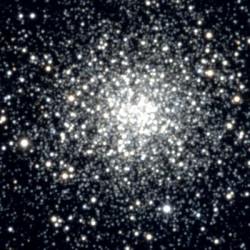 But there could be other reasons as well… “We report on the detection of SiO masers in Asymptotic Giant Branch variables toward bulge/disk globular clusters. In five out of six cases, the radial velocities are compatible with the optically measured radial velocities of globular clusters in the assessed uncertainty. Two sources, toward Terzan 5 and Terzan 12, lie very close to the cluster centers. The objects toward Pal 6 and Terzan 12 have luminosities appropriate to the AGB tip in globular clusters, while those toward NGC 6171, Pal 10, and Terzan 5 are brighter than expected.” says M. Noriyuki. “It is suggested that the latter three may have evolved from merged binaries, offering a test for binary-evolution scenarios in globular clusters, if the membership is approved.”
But there could be other reasons as well… “We report on the detection of SiO masers in Asymptotic Giant Branch variables toward bulge/disk globular clusters. In five out of six cases, the radial velocities are compatible with the optically measured radial velocities of globular clusters in the assessed uncertainty. Two sources, toward Terzan 5 and Terzan 12, lie very close to the cluster centers. The objects toward Pal 6 and Terzan 12 have luminosities appropriate to the AGB tip in globular clusters, while those toward NGC 6171, Pal 10, and Terzan 5 are brighter than expected.” says M. Noriyuki. “It is suggested that the latter three may have evolved from merged binaries, offering a test for binary-evolution scenarios in globular clusters, if the membership is approved.”
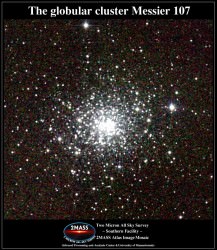 M107 might be a middleweight contender when it comes to metallicity, but it finishes the round with 25 variable stars. It is also known to contain blue straggler stars, too… But where did they come from? With all of those suns so closely packed together, it stands to reason that a collision may have happened more than once. “There are several observed phenomena in globular clusters that are thought to be the result of dynamical processes or binary star evolution. This review examines these manifestations of the interaction between globular cluster dynamics and stellar evolution. Blue stragglers may be formed by the evolution of primordial binaries or by collisions.” says A. Knudsen. “Current evidence suggests that both processes are likely to occur, and that the observed blue straggler sequences can place dynamically interesting limits on rates. Color gradients in globular clusters are thought to becaused by the stripping of giants by collisions, although the creation of blue subdwarfs by the same process may also be required to explain the observations. The observed X-ray sources and radio pulsars are apparently also made by a variety of dynamical processes that are still not fully understood.”
M107 might be a middleweight contender when it comes to metallicity, but it finishes the round with 25 variable stars. It is also known to contain blue straggler stars, too… But where did they come from? With all of those suns so closely packed together, it stands to reason that a collision may have happened more than once. “There are several observed phenomena in globular clusters that are thought to be the result of dynamical processes or binary star evolution. This review examines these manifestations of the interaction between globular cluster dynamics and stellar evolution. Blue stragglers may be formed by the evolution of primordial binaries or by collisions.” says A. Knudsen. “Current evidence suggests that both processes are likely to occur, and that the observed blue straggler sequences can place dynamically interesting limits on rates. Color gradients in globular clusters are thought to becaused by the stripping of giants by collisions, although the creation of blue subdwarfs by the same process may also be required to explain the observations. The observed X-ray sources and radio pulsars are apparently also made by a variety of dynamical processes that are still not fully understood.”
History: Messier 107 was originally discovered by Pierre Mechain in April 1782 – perhaps destined for a future edition of the Messier Catalog. In his letters he writes: “In April 1782 I discovered a small nebula in the left flank of Ophiuchus between the stars Zeta and Phi, the position of which I have not yet observed any closer.” It was independently recovered again by Sir William Herschel on May 12, 1793 and listed in his unpublished notes as: “A very beautiful extremely compressed cluster of stars, extremely rich, 5 or 6′ in diameter, gradually more compressed toward the centre.”
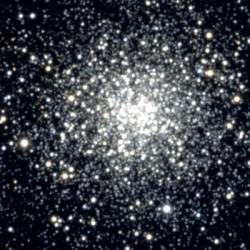 While Herschel’s son John would later add it to his catalog, it was observed beforehand by Admiral Smyth who states in his notes: “A large but pale granulated cluster of small stars, on the Serpent-bearer’s right leg. There are five telescopic stars around it, so placed as to form a crucifix, when the cluster is high in the field; but the region immediately beyond is a comparative desert. After long gazing, this object becomes more compressed in the centre, and perplexes the mind by so wonderful an aggregation. It was discovered by WH in May, 1793, and was registered 5′ or 6′ in diameter. The mean place was obtained by differentiation with Zeta Ophiuchi, from which it is distant 3 deg to the south-south-west, in the line between Beta Scorpii and Beta Ophiuchi.”
While Herschel’s son John would later add it to his catalog, it was observed beforehand by Admiral Smyth who states in his notes: “A large but pale granulated cluster of small stars, on the Serpent-bearer’s right leg. There are five telescopic stars around it, so placed as to form a crucifix, when the cluster is high in the field; but the region immediately beyond is a comparative desert. After long gazing, this object becomes more compressed in the centre, and perplexes the mind by so wonderful an aggregation. It was discovered by WH in May, 1793, and was registered 5′ or 6′ in diameter. The mean place was obtained by differentiation with Zeta Ophiuchi, from which it is distant 3 deg to the south-south-west, in the line between Beta Scorpii and Beta Ophiuchi.”
May you enjoy gazing into it until the stars resolve!
Top M107 image credit, Palomar Observatory courtesy of Caltech, Messier 107 Hubble Image, M107 courtesy of NOAO, Messier 107 courtesy of Western Washington University, M107 2MASS image and M107 image courtesy of NOAO/AURA/NSF.

